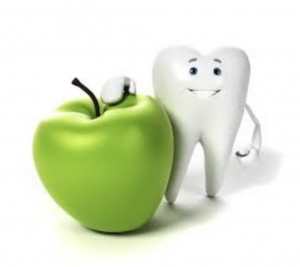
Dental anxiety is a universal phenomenon. It is very common and can affect anybody regardless of their age. Research has shown that 9% to 20% of Americans avoid visiting the dentist, thanks to anxiety or fear.
So what is dental anxiety?
 Dental anxiety can be defined as fear, stress or anxiety in a dental setting. Dental anxiety should not be confused with dental phobia as they are not the same thing. Dental phobia is actually an irrational intense fear or anxiety – a more serious condition. However, unlike dental anxiety, it is less common.
Dental anxiety can be defined as fear, stress or anxiety in a dental setting. Dental anxiety should not be confused with dental phobia as they are not the same thing. Dental phobia is actually an irrational intense fear or anxiety – a more serious condition. However, unlike dental anxiety, it is less common.
Fear of visiting the dentist can result in procrastinating or even avoiding dental treatment. Although going to the dentist may not be fun, it is extremely important. In fact, dental visits are a crucial part of maintaining our overall health.
People with dental anxiety will feel uneasiness about an upcoming dental visit. They usually have exaggerated or baseless worries or fears. This allows dental problems to continue unchecked. They include gum disease, tooth decay or damage. The anxiety increases and the problems persist for lack of the intervention of a dentist. Finally, extensive treatment becomes necessary, which would have been prevented with simple regular routine examinations. Long overdue dental visits will reveal severe problems and the need for scary or possibly painful and costly procedures. This is why you should not allow dental anxiety to keep you from getting the necessary dental treatment.
Reasons for dental anxiety
People tend to develop dental anxiety for various reasons. The most common ones include:
- Earlier painful or unpleasant experiences
- A feeling of helplessness plus loss of control in a dental office setting
- Fear of injections
- Fear of pain and blood
- Fear of embarrassment about the poor state of one’s teeth

What are the dental anxiety treatment options?
Dental anxiety can actually make receiving dental care difficult. Fortunately, there are several dental anxiety treatment options available to match a person’s needs. They can be used separately, in combination or together with relaxation techniques to relieve dental pain as well as anxiety.
Local anesthetics – A thin needle is used to inject these pain control drugs at the spot where the dental procedure is to be carried out. In most instances, the medicine becomes effective in just a few minutes, numbing the pain for around three hours. Licodaine and mepivacaine are the most commonly used medication, having replaced procaine. A large number of dentists prefer using either of the drugs in combination with a little dose of epinephrine, which narrows the patient’s blood vessels, keeping the painkiller working for a longer period. This mixture is however not suitable for those with blood pressure or different types of cardiovascular conditions.
Anti-anxiety drugs – The dentist can offer a patient either diazepam (Valium) or a drug similar to it to calm the nerves prior to a dental procedure. If a patient opts for these drugs, he/she will be required to arrive for the appointment roughly one hour ahead of time. Also, they will need to have someone else drive them home.
Topical anesthetics – Topical preparations are effective in easing an injection’s sting or minimizing the discomfort of tooth cleanings as well as minor gum treatments. They are usually available in numbing gel or spray form. The dentist applies it on the gums a few minutes before commencing work. A number of dentists are currently using a tiny adhesive strip which they stick to a patient’s gum. This actually releases the sedative into the gum tissue.
Conscious sedation – This method dulls a patient’s awareness without constraining body functions like breathing and swallowing. This type of medications are normally used to suppress anxiety; however, they can be used together with other drugs to lessen pain. Nitrous oxide, also referred to as “laughing gas” is among the most common choices. It is inhaled via a mask in a mixture together with oxygen. It produces a feeling of relaxation that starts almost instantly and ends the moment the patient stops breathing it. It is quite safe for most people since it has negligible side effects.
When it comes to prolonged dental procedures, however, medications administered intravenously could work better. The dentist will combine anti-anxiety drugs with a sedative or a narcotic and at times, a barbiturate drug. This type of sedation though is offered only by dentists who are specially trained and certified.
General anesthesia – This type of sedation makes a patient unconscious and incapable of breathing or swallowing independently. It is normally reserved for only surgical procedures on the jaw or mouth. Besides, it is used for patients with overwhelming dental anxiety that makes routine care impossible, as well as people who have physical or mental disabilities that tend to interfere with treatment. While it is safe for the majority of patients, general anesthesia has more risks than other types of sedation. As such, it should be administered only by specialists trained in anesthesiology.
